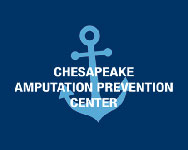Why Foot Wounds Don’t Always Heal
The body is generally able to heal minor wounds fairly rapidly. But when complications occur, one or more of the following factors are usually the reason.
Poor Circulation
Oxygen is a critical tool for healing, but decreased blood flow reduces the amount of oxygen and essential nutrients that reach a wound. This means the area remains highly inflamed and won’t heal properly.
Weakened Immune System
Your immune system is a complex network of antibodies, cells, cytokines, organs, and even your skin, working together to fight infection and heal your body. If it isn’t strong, it won’t have a robust response to addressing wounds, allowing an opportunity for germs to invade through the injury.
Increased Inflammation
Inflammation is a normal part of the healing process and necessary in the initial stages of recovery. However, if inflammation is continuous due to illness, dietary factors, or a lack of exercise, it contributes to a weakened immune response.
Neuropathy
Decreased sensation from peripheral neuropathy, a form of lower extremity nerve damage, causes your feet and toes to be more sensitive to weight and pressure and makes it harder to recognize when an injury has occurred.
Stronger Bacteria
Many common types of bacteria that contribute to infections also thrive in people with higher glucose levels. Glucose is a form of fuel for certain types of bacteria, so if you’re struggling to manage your diabetes and blood sugar levels, this makes bacteria stronger and more difficult to fight off.
How Vaporox Works
VHT uses a low-frequency, non-thermal ultrasonic mist and topical oxygen which are administered through a treatment chamber positioned around the wound like a bubble. Sessions are only about 40 minutes long and are generally recommended 2–3 times per week. During sessions, vapor stimulates the production of new tissue. This decreases the time foot wounds require to heal and allows bacteria less opportunity to enter the body.
In our various Maryland offices, our foot doctors have also found success using VHT with patients who suffer from other conditions such as:
- Burns
- Frostbite
- Venous leg ulcers
- Gangrene
- Pressure ulcers
- Post-surgical wounds
- Skin grafts
- Amputations
Vaporox Is Just One Piece of a Treatment Plan
VHT doesn’t simply replace other treatment options. It works with them to improve the overall effect of each intervention. When combined with standard wound care, studies found that 84 percent of wounds were able to heal.
At Annapolis Foot & Ankle Center, we develop an individualized treatment plan for every patient that makes the best possible use of the options that are likely to be most effective for you. We aren’t just trying to fix the immediate concerns that bring you into our office—we also plan for long-term foot health. For wound care, this may include:
- Patient education around managing underlying conditions and treatment
- Topical treatments
- Antibiotics
- Cleaning
- Disinfection
- Wound dressing
- Anti-clotting medications
- Compression
- Debridement
- Drainage
- Prosthetics
- Orthotics
- Specialized footgear
- Elevation
- Reducing load-bearing by having patients use crutches or a wheelchair
- Surgery
Our Chesapeake Amputation Prevention Center Can Help
Annapolis Foot & Ankle Center, with offices in Annapolis, Stevensville, and Glen Burnie, has board-certified podiatrists who take the time to evaluate each case to ensure a rapid, accurate diagnosis and effective treatment. We empower our patients to be active participants in their own healing, using patient education and listening to the knowledge they are able to share with us.
Our team looks at the whole picture, such as:
- Patient symptoms
- Personal and family medical history
- Location of the problem
- Appearance of the injury
- Information from imaging tools, if appropriate
- Preventative strategies to avoid future wounds and ulcers
Unlike many cutting-edge treatments, VHT is often covered by health insurance, making it more readily available if you need it. However, beyond the ability to afford this treatment, it’s also crucial to determine if Vaporox is the right course of treatment. You can trust that our doctors only recommend medical options that give you the highest chance of recovery and regain the best possible quality of life.








